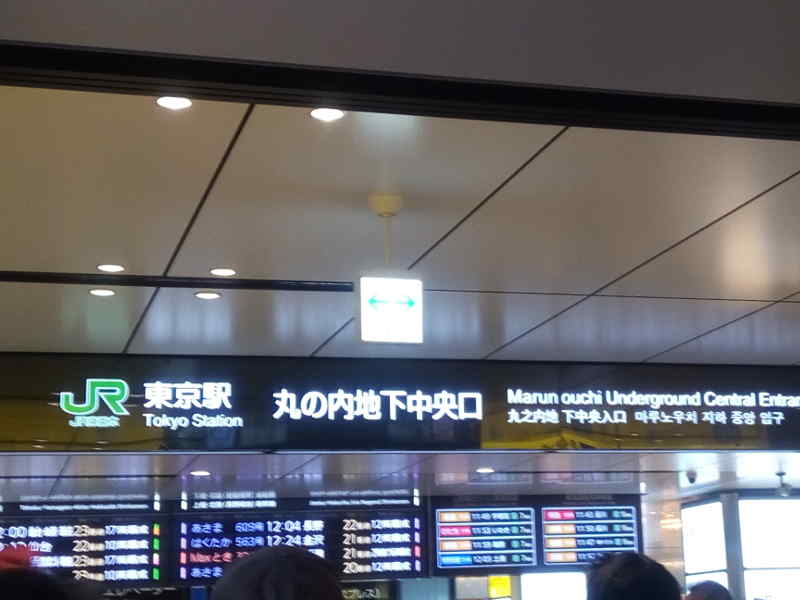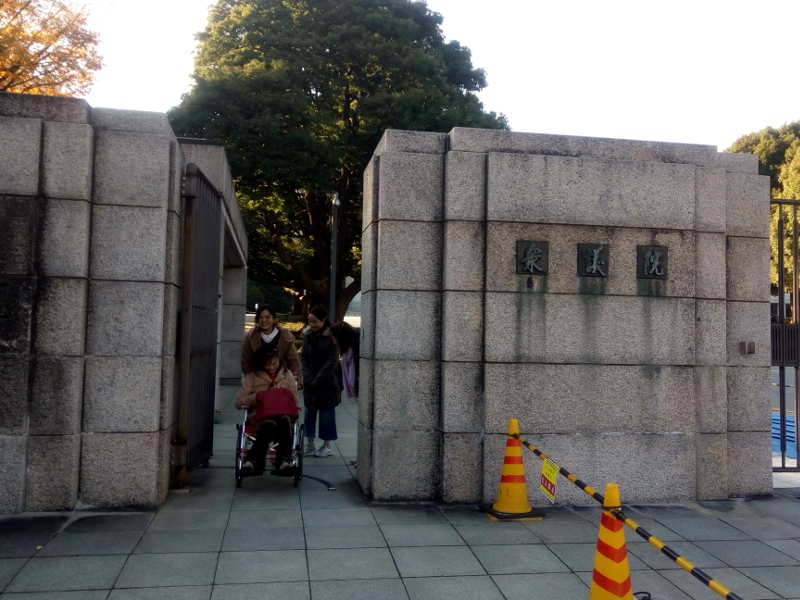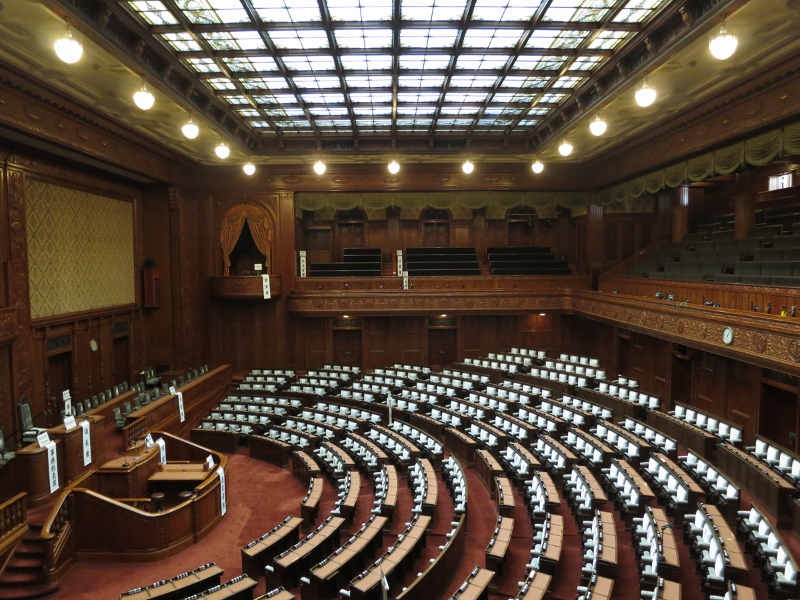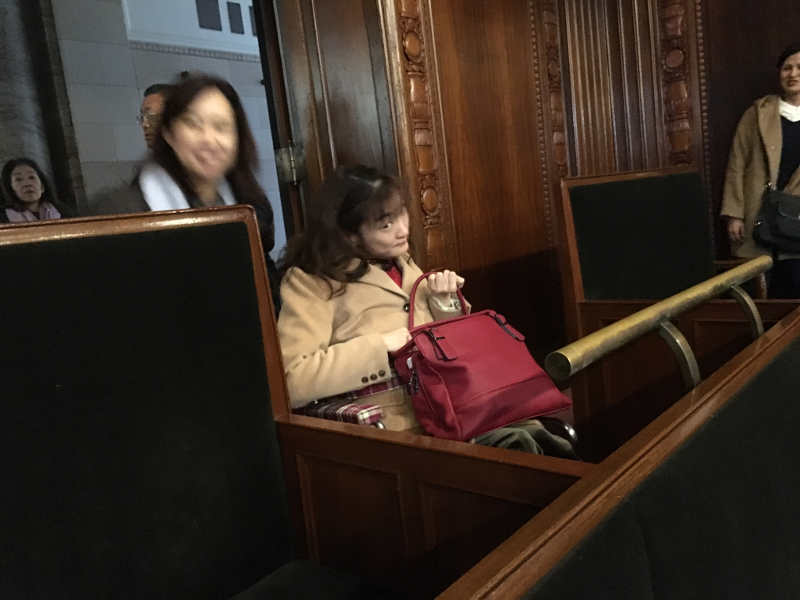Hi! I’m Maki. Today I’m going to give you my report on our field work at the National Diet of Japan (the House of Representatives), the Hie Shrine and the Tokyo Garden Terrace Kioicho. We carried out our wheelchair accessibility review at these places on a weekend at the beginning of December. First I will tell you about the first part of the field work.
We met at the Marunouchi Underground Central Entrance of JR Tokyo Station.


Go straight after leaving the central entrance.

Then you can reach the Marunouchi Line ticket gate.

There is an elevator beside the ticket gate. Take the elevator down to the platform.
It takes about 7 minutes to arrive at Kokkai-gijidomae Station. Going out of the A1 Exit, you can find an elevator on the left side which takes you up to the ground level.

We took the elevator up to the ground level. It is located on the left side beyond the ticket gate.
Get out of the A2 Exit if you would like to go to the central entrance of the National Diet which you often see on TV. We went out from the A1 Exit to go directly to the reception for the tours of the Diet Building. After leaving the exit, we turned right, walked along the street and then reached the reception building.
There is a ramp at the entrance.
The National Diet of Japan

You can visit the House of Representatives only on Saturdays, Sundays and national holidays. On the other hand, you can visit the House of Councillors only on weekdays.
The tours of the Diet Building on Saturdays, Sundays and national holidays are conducted 6 times a day as of December 2017. They start at 9:30, 10:30, 11:30,13:00, 14:00 and 15:00 respectively. 10 visitors or less don’t have to make an advance reservation. You are admitted to the tour for free! Please be aware that you need to check in at the reception desk no later than 10 minutes prior to the tour. Only a representative of your group is asked to write his or her address, name and age in a printed form. A Diet guard guides you around some places of the Diet Building. Our guided tour just took 45 minutes although our group included a wheelchair user and we asked him many questions.
We felt sorry that photography was prohibited in the building except the Chamber of the House of Councillors. Let me write down how our guided tour was going on. We were escorted to a different route from one that was prepared for other general visitors because our wheelchair member had to take some elevators. (We admired the same rooms and things as other visitors do.) Walking round the special route with no one else, we felt as if the whole building was were exclusively reserved for our 8 Accessible members! We could also get on an elevator with luxurious adornments which other visitors could not take.
We once went outside and entered the next building where an elevator was located. There was a steep ramp before the elevator. An attendant might find it a bit challenging to push a wheelchair along this ramp. Leaving it aside, what we did was just to walk through the flat corridor. Therefore, I found no problems with wheelchair accessibility.
Above is the Chamber of the House of Councillors which is the only room where photography is permitted. I could see many seats for members of the press.

We finally took the commemorative photo against a backdrop of the National Diet. What a nice photo that shows us and the building in crisp autumn weather!

Our tour was complete when we reached the central exit. Thank you Diet guard for your guiding.
We turned about and returned to the reception building for our wheelchair member to use the multipurpose restroom. (It took about 10 minutes.) Although the Diet Building is old, the restroom located next to the reception is new!

A Brief Accessibility Review from YUKORIN
Our field work at the National Diet of Japan was is a valuable experience for me. I had been concerned whether or not a wheelchair user would be able to enter this historic building which has many stairs. As opposed to my concern, however, I was very happy that a special route was prepared for wheelchair users. We could admire the beautiful inside of the building while a Diet guard guided us around different places as if it were exclusively reserved for us. As you can see in the photo above, the Chamber of the House of Councillors was thoughtfully constructed where wheelchair users can look down inside from the height of their wheelchair. The corridor and courtyards are spacious and quiet. You can really enjoy the guided tour in a serene mood. But there is one thing you might want to keep in your mind. Only one multipurpose restroom is located beside the reception. Anyway I felt as if we were in a castle appreciating a variety of sumptuous adornments placed in the splendid structures of each area. The Diet Building is wheelchair friendly and worth visiting. You will have an intellectual and exquisite experience, I assure you.
I wrap up my report on the former part of our field work. We were highly satisfied with the guided tour. I learned a lot from the Diet guard as he answered any question from us. I will tell you on the next blog about the Hie Shrine and the Tokyo Garden Terrace Kioicho we visited later.




